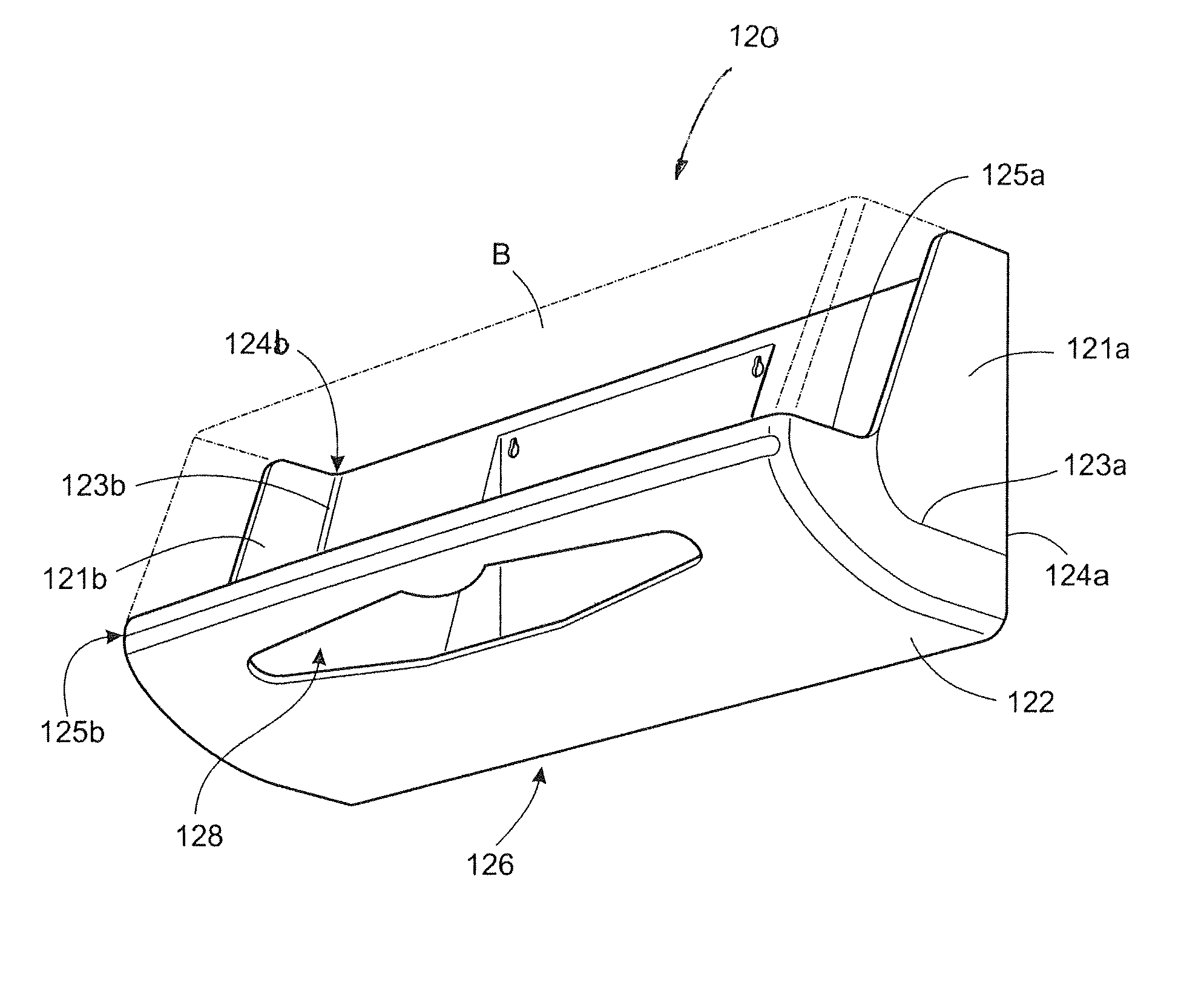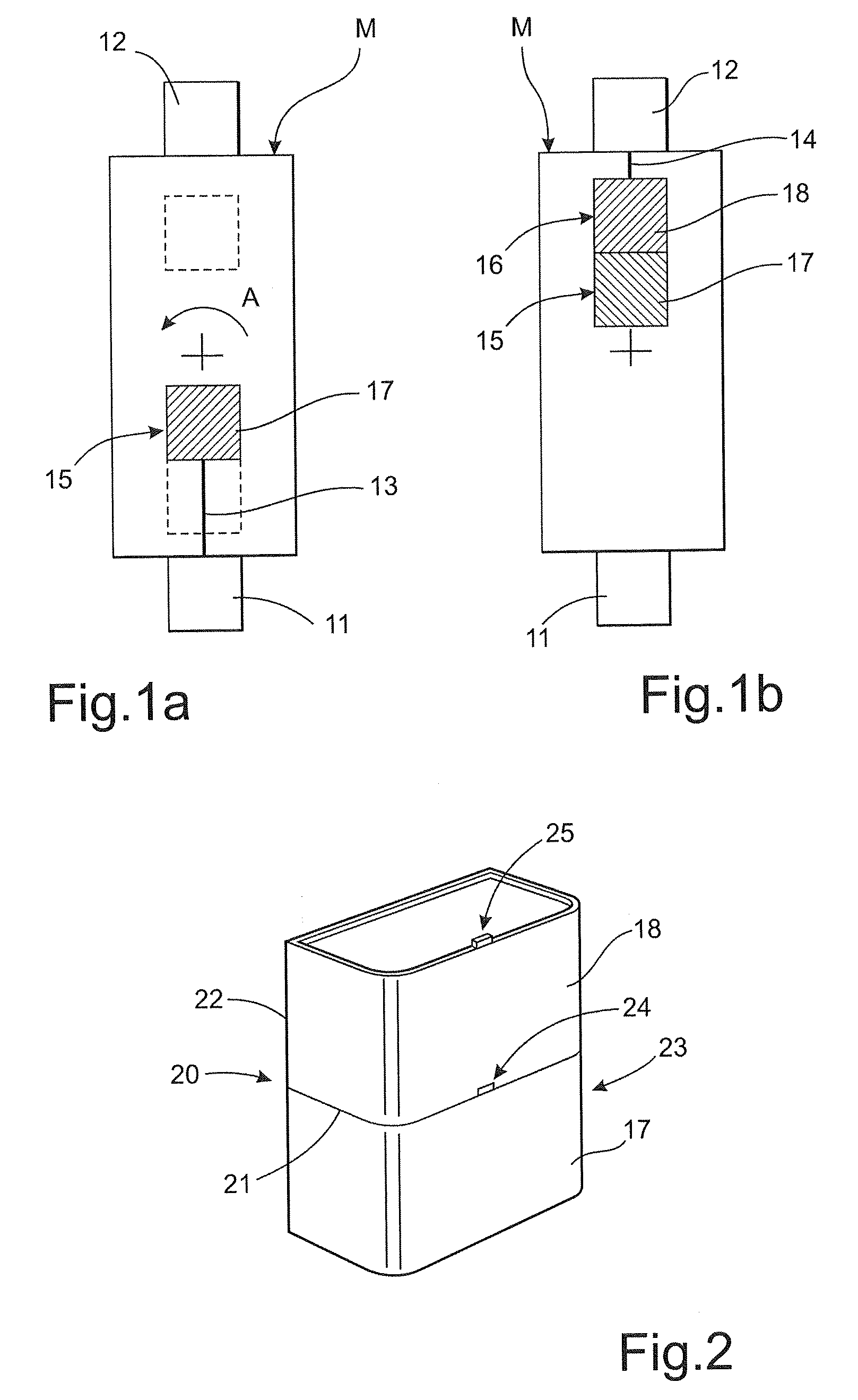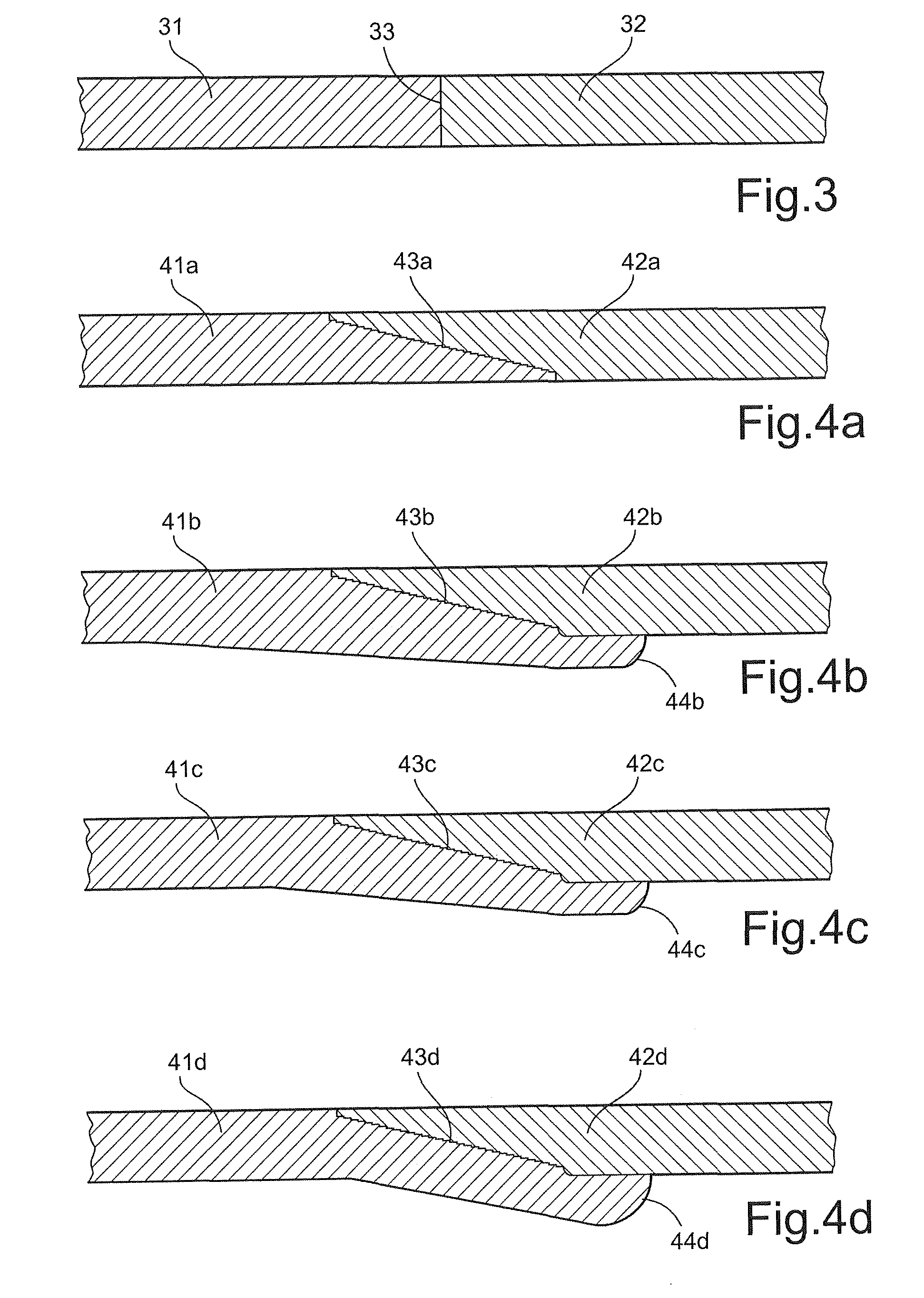Dispenser part
a dispenser and part technology, applied in the field of dispenser parts, can solve the problems of seams that cannot withstand the forces expected to be withstand, at least the first component may be damaged, and the dispenser may be exposed to accidental or intentional point loading, etc., to achieve the effect of facilitating melting
- Summary
- Abstract
- Description
- Claims
- Application Information
AI Technical Summary
Benefits of technology
Problems solved by technology
Method used
Image
Examples
Embodiment Construction
[0070]FIGS. 1A and 1B show a schematic illustration of an arrangement for carrying out a two component injection moulding process for making a dispenser part according to the invention.
[0071]In this example, the process uses two injection units 11, 12 and a rotary mould M designed for sequential injection of a single part using two different materials. In the subsequent text the process is described for the injection of a transparent and an opaque material, but it is applicable for any combination of transparent and / or coloured materials. The mould M used in this example is a two cavity mould. The mould M is held closed in a first cavity position shown in FIG. 1A and heated to a predetermined operating temperature. The first material, which is usually the material having the highest injection temperature, is injected from the first injection unit 11 through a primary runner system 13 into a first cavity 15 to form a first component 17. In this example, the first material is a transp...
PUM
| Property | Measurement | Unit |
|---|---|---|
| thickness | aaaaa | aaaaa |
| thickness | aaaaa | aaaaa |
| thickness | aaaaa | aaaaa |
Abstract
Description
Claims
Application Information
 Login to View More
Login to View More - R&D
- Intellectual Property
- Life Sciences
- Materials
- Tech Scout
- Unparalleled Data Quality
- Higher Quality Content
- 60% Fewer Hallucinations
Browse by: Latest US Patents, China's latest patents, Technical Efficacy Thesaurus, Application Domain, Technology Topic, Popular Technical Reports.
© 2025 PatSnap. All rights reserved.Legal|Privacy policy|Modern Slavery Act Transparency Statement|Sitemap|About US| Contact US: help@patsnap.com



